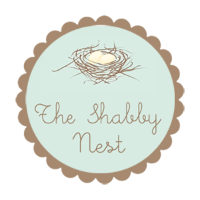I love geraniums. Red ones. Bright red geraniums. I know they’re not in season yet, but I needed to paint a sample for my upcoming classes at Parks & Rec.
Nah, that’s just an excuse. I just love red geraniums. I want to paint some in old terracotta pots, maybe lining a staircase that goes up an old building in, say, France or Italy?
Now you see why I love geraniums . . . they remind me of the european countryside. Or, what I’ve seen in pictures, at least.
This is a super simple way to paint them – just 5 colors. I wanted a bright red, but not too bright. Plaid’s Folk Art Napthol Crimson is perfect! For highlighting I used Winter White, shading – Red Velvet. For the foliage I just used Hauser Green Medium & Dark.
Ready to paint? Let’s get started! I think you’ll be surprised how easy it is to paint these geraniums.
First, paint a blob, a cloud, a big red clump, with Napthol Crimson.
Next, make some loops or ‘C’ shapes with Winter White. They don’t have to be connected, but you can connect them if you want.
I just randomly paint ‘C’s (or ‘U’s) all over the red clouds.
Don’t panic . . . we’ll camouflage these in a bit.
Now we’re going to add some shading with Red Velvet. Just paint it next to the Winter White on the ‘outside’ of the curves.
This will create depth and the appearance of layering in the blossoms.
If you cover some of the white with the dark red, no worries.
Then, take Napthol Crimson and topcoat the blossom totally. Don’t panic – after it dries, you’ll still see some of the highlighting and shading.
You can always add more white, and dark too, if you want. Or you can mix white with red or red with dark red.
But this method of basecoat, highlight, shade, and topcoat gives you a really nice painting.
With Hauser Green Medium, paint all the stems and leaves.
I like the leaves to overlap. Geranium leaves are always plentiful, so I like to have a lot.
With Hauser Green Dark, shade the stems on just one side.
Wherever you put dark shades, or shading, it makes things look like they’re receding, or farther away.
White and highlighting does the opposite – it makes things appear closer.
On stems, I shade along the inside of the curve. It gives the stem even more dimension.
Now, take the Hauser Green Dark and apply to the leaves that are ‘underneath’ the other leaves. See what a difference just this little shading makes?
Cool, huh?
Paint the same shading on the stems, only underneath the geranium blossoms.
Now we need to give the leaves some dimension. Geranium leaves are awesome, full of shape and different colors and shades.
But I wanted to keep these uber simple, yet still look like a curved – not flat – leaf.
I start with a dark green dot in almost the center of the leaf – a little closer to the top though – not dead-on center.
Then I pull little strokes outward from that center dot.
They look like little green spiders, don’t they?
Not for long . . .
. . . topcoat the leaves with Hauser Green Medium. I left the shading between the leaf layers alone and just covered the leaf veining.
But something’s missing. Can you tell what it is?
Little stems! The leaves need to be connected to stems!
Okay, so I went a little overboard and added curlicues or tendrils too.
I had to add something, since I didn’t put the geraniums in a clay pot, you know! I mean, it’s only a 2 hour class and I want all my students to leave with a completed painting. So I’d rather they feel comfortable painting geraniums and foliage than one flower, a couple of leaves and a half-finished pot.
But, not bad for people with no experience to paint in 2 hours, don’t you think?




































No comments:
Post a Comment